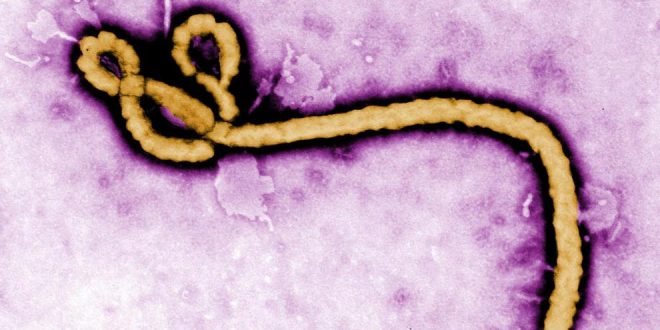The Ebola virus can persist in some parts of the body, including in brain fluid, and re-emerge long after treatment and recovery to cause fatal disease, reveals a new groundbreaking study.
The findings, published in the journal Science Translational Medicine, have major implications for long-term follow-up efforts to reduce disease relapse in individuals who recover from the disease as well as to lower the risk of future Ebola virus outbreaks.
Pathology of disease recurrence, especially in those previously treated with therapeutic monoclonal antibodies were largely unknown, said researchers from the US Army Medical Research Institute of Infectious Diseases (USAMRIID) in Maryland.
In the new study, scientists used a monkey disease model – one with very similar Ebola disease manifestation signs as humans – to shed more light on where the virus tends to hide.
The research found two monkeys that had initially recovered from Ebola-related disease after treatment with antibody therapeutics had recurrence of severe infection with the virus and succumbed to the disease.
“Ours is the first study to reveal the hiding place of brain Ebola virus persistence and the pathology causing subsequent fatal recrudescent Ebola virus-related disease in the nonhuman primate model,” Dr Zeng added.
Ebola viral disease is one of the deadliest infectious diseases known to humankind with a case fatality rate ranging from 25 per cent to 90 per cent in past outbreaks, and 50 per cent on average.
The virus – still a major threat in Africa with three outbreaks occurring in 2021 alone – is transmitted to people from wild animals and spreads among humans via contact with blood, secretions organs or other bodily fluids of an infected individuals.
Recent reports have pointed to the re-emergence of Ebola viral disease in individuals who had recovered from the infection in the past.
Citing an example of one such case, scientists said a British nurse who had recovered from severe Ebola virus disease following therapeutic antibodies during the 2013-16 outbreak in Western Africa, experienced the deadly virus relapse in the brain, causing her to suffer from a very serious neurological condition nine months later.
Another vaccinated patient who had been treated with antibody therapeutics for Ebola virus disease six months earlier relapsed and died at the end of the 2018-20 outbreak in the Democratic Republic of the Congo, and also led to many subsequent human-to-human transmissions, researchers said.
Now scientists believe the virus can hide and persist in specific regions of the body, such as the vitreous chamber of eyes, the seminiferous tubules of the testes and the ventricular system of the brain, despite being cleared from all other organs.
“The persistent Ebola virus may reactivate and cause disease relapse in survivors, potentially causing a new outbreak,” Jun Liu, another co-author of the study from USAMRIID, added.
Researchers said the new findings highlight the need for long-term follow-up of Ebola virus disease survivors – including those treated with therapeutic antibodies – to prevent re-emergence of infection in them.
“This will serve to reduce the risk of disease re-emergence, while also helping to prevent further stigmatisation of patients,” Dr Zeng added.
The Independent
Vishwam Sankaran
 Lebanese Ministry of Information
Lebanese Ministry of Information



